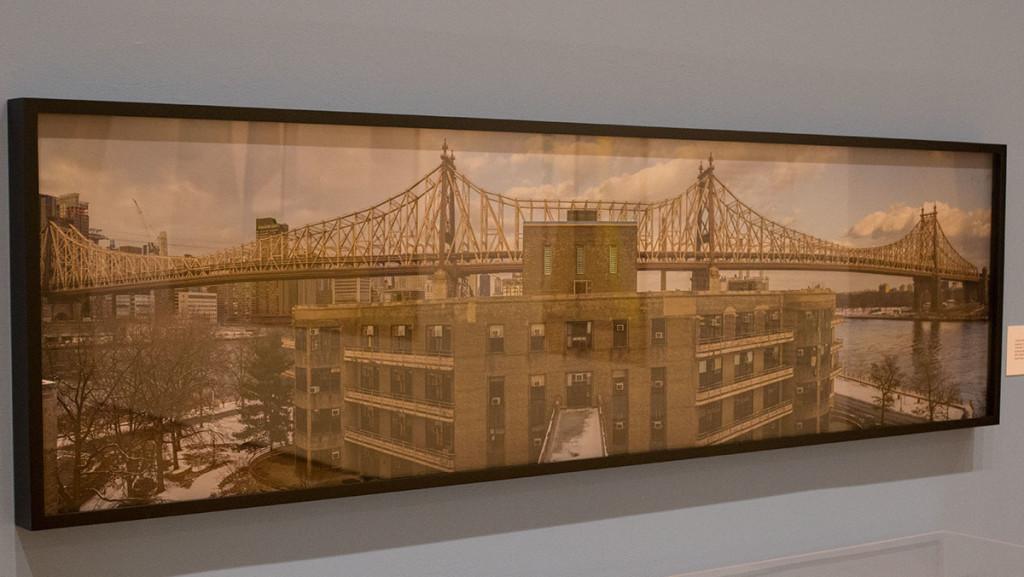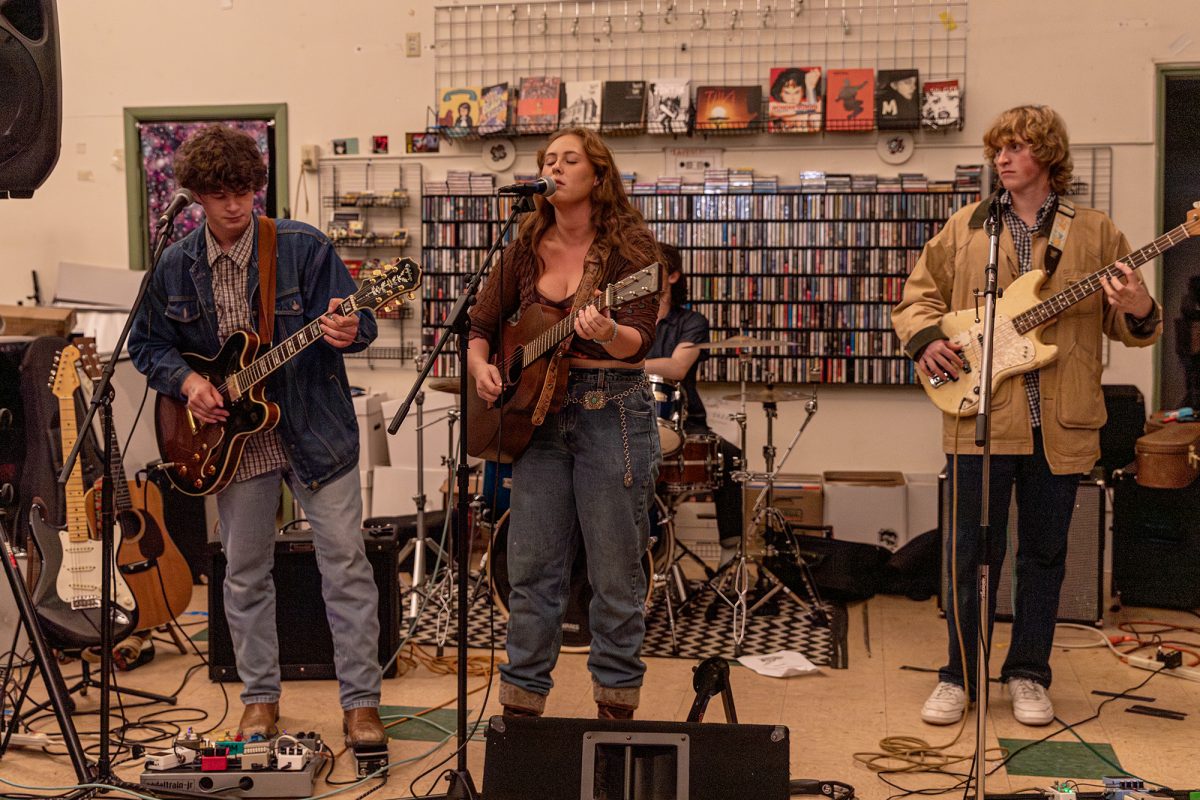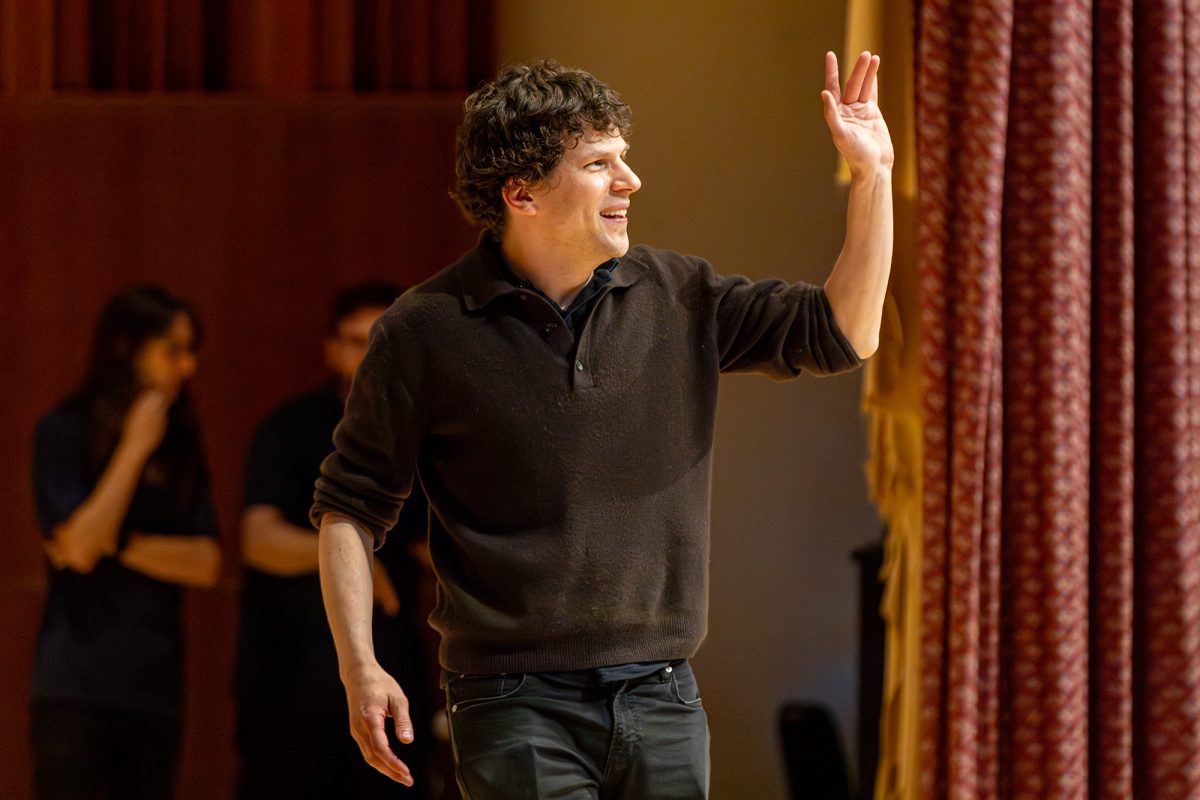History in the form of abstract works of art currently resides on the walls of the Herbert F. Johnson Museum, located at Cornell University. The room is illuminated by vibrant and pale hues and geometric shapes, welcoming museumgoers as soon as they enter the exhibit.
The museum is currently home to three murals dating back to the 1940s. The exhibit will be open until May 29 and includes work by Ilya Bolotowsky, Albert Swinden and Joseph Rugolo.
The murals were originally located at the Goldwater Memorial Hospital, located on Roosevelt Island in New York City, and were a result of President Franklin D. Roosevelt’s Work Projects Administration program, which employed millions of unemployed people to carry out public works projects such as constructing buildings. The murals were painted over in 1957 and remained hidden until 2001, when Bolotowsky’s “Abstraction” was discovered by conservator Luca Bonetti and his staff, with the help of the artist’s son, Andrew Bolotowsky. The hospital was demolished in 2014 in preparation for the new Cornell Tech campus that will be built in its place.
EverGreene Architectural Arts, a specialty contractor known for its work in restoration and decoration, was commissioned to investigate the existence of the murals in 2013. Kim Lovejoy, vice president and restoration director, said the removal of such murals varies depending on several factors.
“Every situation is different. You have to look at the condition of the canvas on which the mural is painted on and the paint that’s on it,” Lovejoy said. “Some are painted directly on the wall and some on canvas. Some are easier to remove than others.”
After the pieces had been restored, the Johnson Museum inquired about displaying segments of the murals in an exhibit. Nancy Green, the museum’s Gale and Ira Drukier curator of European and American art, prints and drawings, said the exhibit has been getting positive responses from the public since it opened Jan. 30.
“Visitors are interested in the history of the works, the sheer scale of them and the connection to the Cornell Tech campus,” she said.
The history of these pieces dates back up to 70 years and differs greatly from other pieces painted at the time, Green said
“These murals are unusual because they are abstract images, which was uncommon,” Green said. “Most WPA murals portray historical or heroic images, a reflection of the interest in regionalist art in the 1930s and early ’40s. The colors and forms of the works on view at the Johnson are lively and cheerful, setting a nice tone for rooms in a hospital devoted to patients with chronic diseases.”
Similarly, Lovejoy said, the abstract images in the murals reflect the area surrounding the hospital.
“The geometric shapes used in the murals allude to genuine forms in the landscape around Roosevelt Island,” Lovejoy said. “The scenes that one sees are reflected in these geometric shapes. It’s quite uplifting and relevant to what one could see outside.”
The uplifting colors and designs of the murals benefited the patients at Goldwater Memorial Hospital, Lovejoy said, and in a similar way, the students at Cornell Tech will also benefit from the murals when they are transported to the campus.
“The artwork will be a connection to the artists’ handmade work and history of the past,” Lovejoy said. “It will give the students creative inspiration in their endeavors.”














